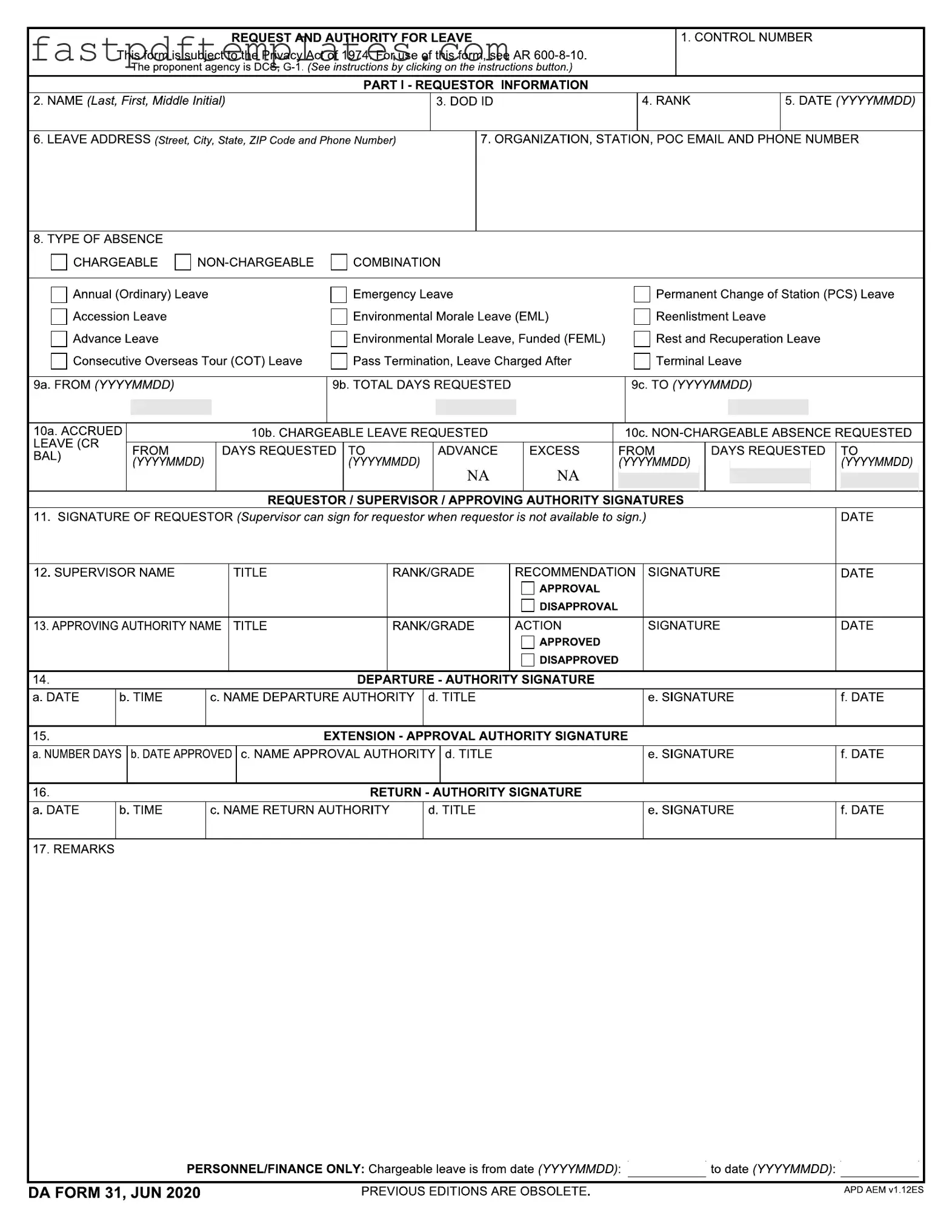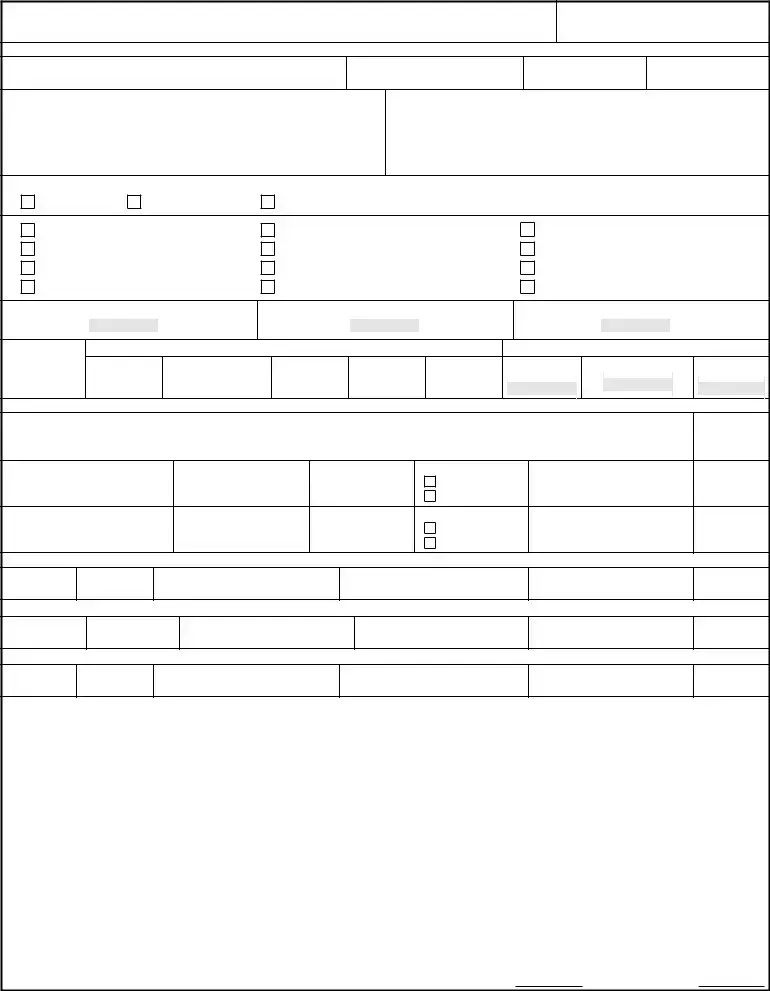The DA Form 31, known as the Request and Authority for Leave, is similar to the SF-50, the Notification of Personnel Action. Both documents serve as official records within military and federal employment contexts. The SF-50 records various personnel actions, including appointments, promotions, and separations. Like the DA Form 31, it requires the employee's information and the specific action being requested or recorded. The SF-50 is essential for tracking an employee's status and entitlements, similar to how the DA Form 31 tracks leave requests and approvals.
Another document comparable to the DA Form 31 is the DD Form 214, Certificate of Release or Discharge from Active Duty. The DD Form 214 summarizes a service member's military career, including their time served and any leave taken. While the DA Form 31 focuses on requesting leave, the DD Form 214 provides a comprehensive overview of a service member's entire service record, including leave entitlements. Both documents are crucial for managing military personnel records and ensuring accurate leave accounting.
The Leave and Earnings Statement (LES) also shares similarities with the DA Form 31. The LES provides detailed information about a service member's pay, deductions, and leave balances. While the DA Form 31 is used to request leave, the LES reflects the outcomes of such requests, showing how much leave has been accrued or used. Both documents play a vital role in managing a service member's financial and leave status, ensuring that accurate records are maintained for both the individual and the military organization.
Lastly, the Form 1250, Request for Leave of Absence, is another document that aligns with the DA Form 31. This form is utilized by federal employees to formally request leave, similar to how military personnel use the DA Form 31. Both forms require the requester to provide personal information and details regarding the type and duration of leave requested. While the Form 1250 is specific to civilian federal employees, the purpose and structure mirror those of the DA Form 31, emphasizing the importance of formal leave requests in both military and civilian sectors.

